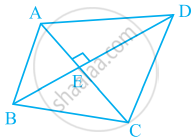Advertisements
Advertisements
Question
In a trapezium ABCD, side AB is parallel to side DC. If ∠A = 78° and ∠C = 120. find angles B and D.
Solution
∵ AB || DC and BC is transversal
∴∠B and ∠C, ∠A and ∠D are Cointerior angles with their sum = 180°
i.e. ∠B + ∠C = 180°
⇒ ∠B + 120° = 180°
⇒ ∠B = 180° – 120°
⇒ ∠B = 60°
Also ∠A + ∠D = 180°
⇒ 78° + ∠D = 180°
⇒ ∠D = 180° – 78°
∠D = 102°
APPEARS IN
RELATED QUESTIONS
Define the following term Convex Quadrilateral .
Complete of the following, so as to make a true statement:
The sum of the angles of a quiadrilateral is .... right angles.
Complete of the following, so as to make a true statement:
A quadrilateral is convex if, for each side, the remaining ______ lie on the same side of the line containing the side.
In Fig. 16.19, ABCD is a quadrilateral.
Name a pair of adjacent angles.
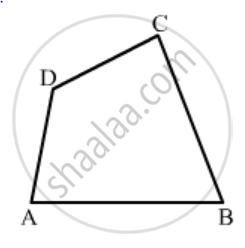
In Fig. 16.19, ABCD is a quadrilateral.
How many pairs of adjacent angles are there?
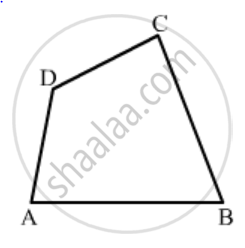
In Fig. 16.21, the bisectors of ∠A and ∠B meet at a point P. If ∠C = 100° and ∠D = 50°, find the measure of ∠APB.

Complete the following statement by means of one of those given in brackets against each:
If opposite angles of a quadrilateral are equal, then it is necessarily a ....................
Two angles of a quadrilateral are 89° and 113°. If the other two angles are equal; find the equal angles.
Use the information given in the following figure to find the value of x.
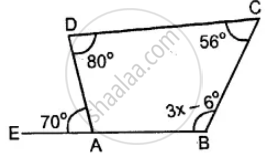
In a trapezium ABCD, side AB is parallel to side DC. If ∠A = x° and ∠D = (3x – 20)°; find the value of x.
In a parallelogram ABCD, its diagonals AC and BD intersect each other at point O.
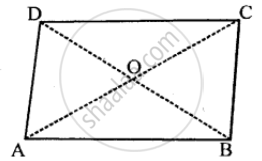
If AC = 12 cm and BD = 9 cm ; find; lengths of OA and OD.
One diagonal of a rectangle is 18 cm. What is the length of its other diagonal?
The angles of a quadrilateral are in the ratio 2 : 4 : 5 : 7. Find all the angles
ABCD is a quadrilateral in which AB || DC and AD = BC. Prove that ∠A = ∠B and ∠C = ∠D.
A quadrilateral can be drawn when all the four angles and one side is given.
The number of straight angles in figure is ______.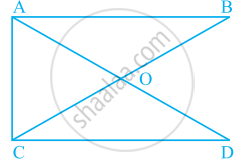
In given figure, What is AE + EC?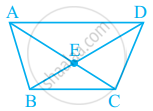
Using the information given, name the right angles in part of figure:
AC ⊥ BD